INFLATION History: Over the past 50 years, the US has had three inflationary time periods, all related to oil/gas prices. It is worth noting that as fast as inflation spiked, it fell off just as dramatically.
Additionally, it is worth noting that mortgage rates do follow the CPI lead, but there is a lag time involved. Rates tend to skyrocket and then gradually decrease. No one wants to be the first to lower rates in case the market experiences a decrease in stall.
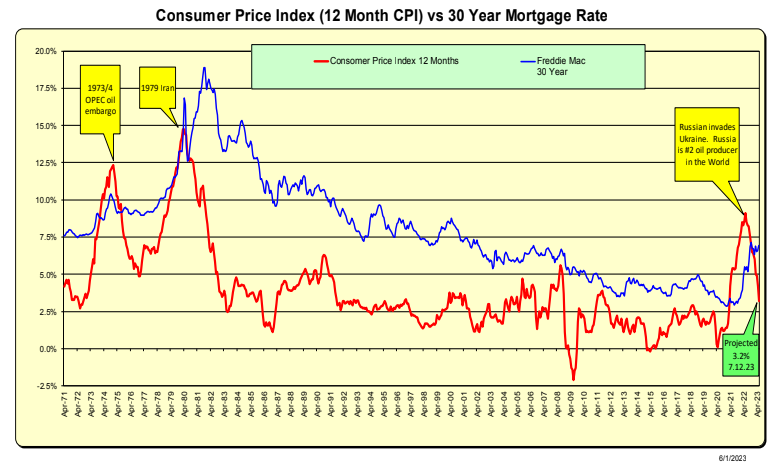
INFLATION Forecast: The annual CPI total reported each month is a combined string of 12 months of data, similar to a row of dominoes. As a new month’s data is added, the oldest one drops off. The two most recent data points are crucial in determining if the CPI will change. For instance, if the monthly rate for May ’23 is 0.3%, it will replace the May ’22 data point of 1.0% on June 13th, 2023, causing the annual CPI to decrease from 4.9% to 4.2%.
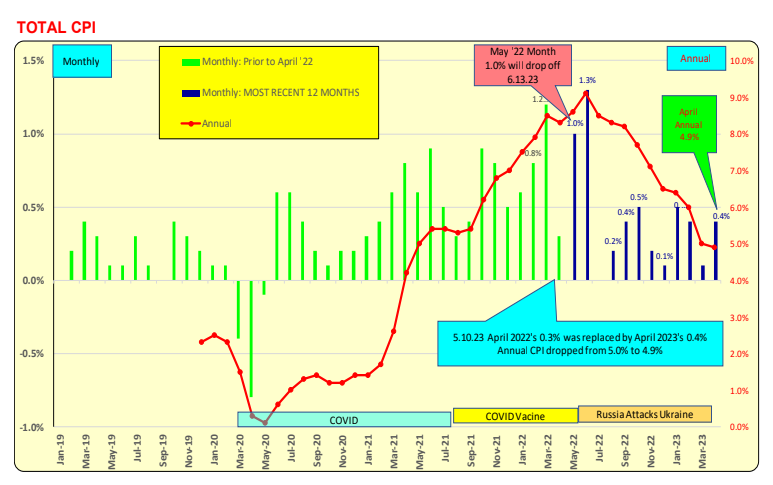
INFLATION: April 2023, as reported on May 10th, 2023. The predicted CPI for May is expected to be released on June 13th, 2023.
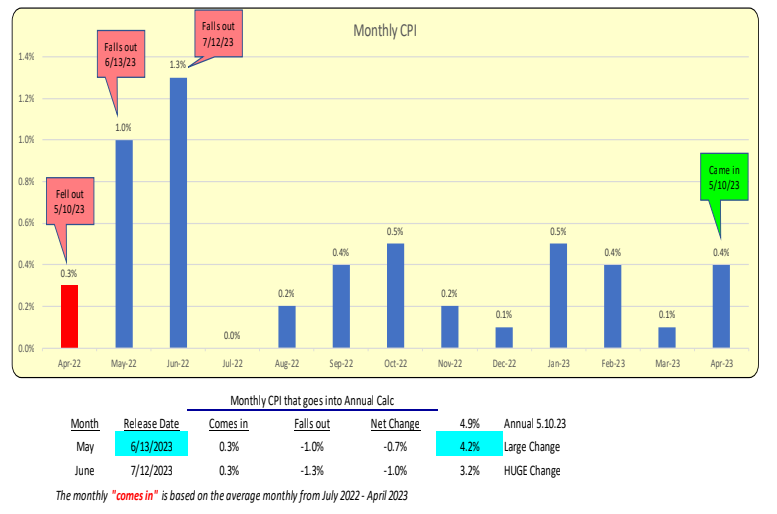
It is a guesstimate that the monthly rate for May will be 0.3% when the actual data is announced on June 13th, 2023. However, it is important to note that the actual rate could be higher or lower. Consequently, the annual CPI for May will change accordingly. The projected range for May’s monthly rate is from 0.0% to 0.9%. Therefore, the resulting annual CPI will range from 3.9% to 4.8%.
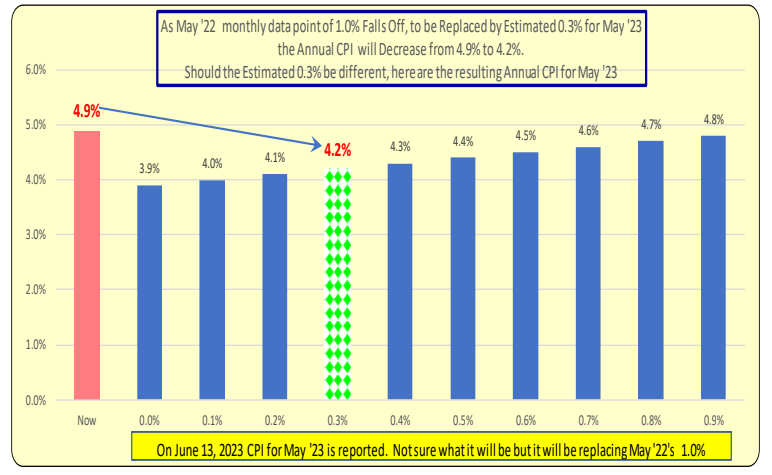
If there is any single item in the CPI that can have a swift and significant impact on its value, it is energy. Although energy prices have been increasing since the beginning of the year, there haven’t been any substantial changes thus far.
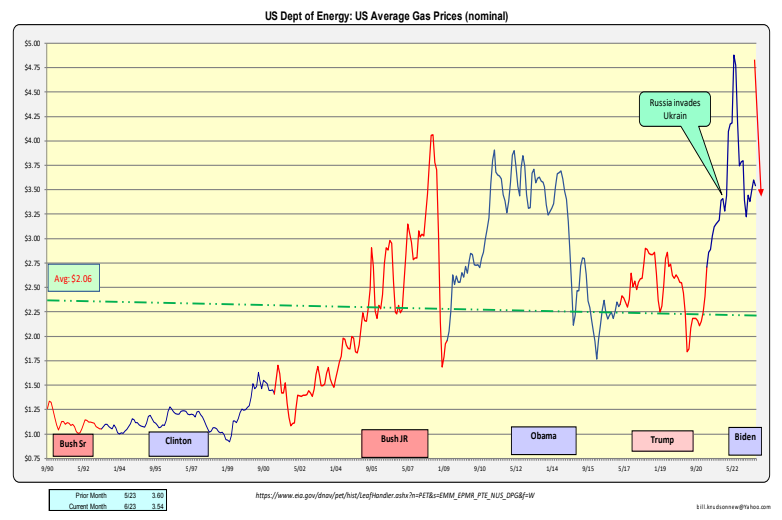
Bill Knudson, Research Analyst LANDCO ARESC
